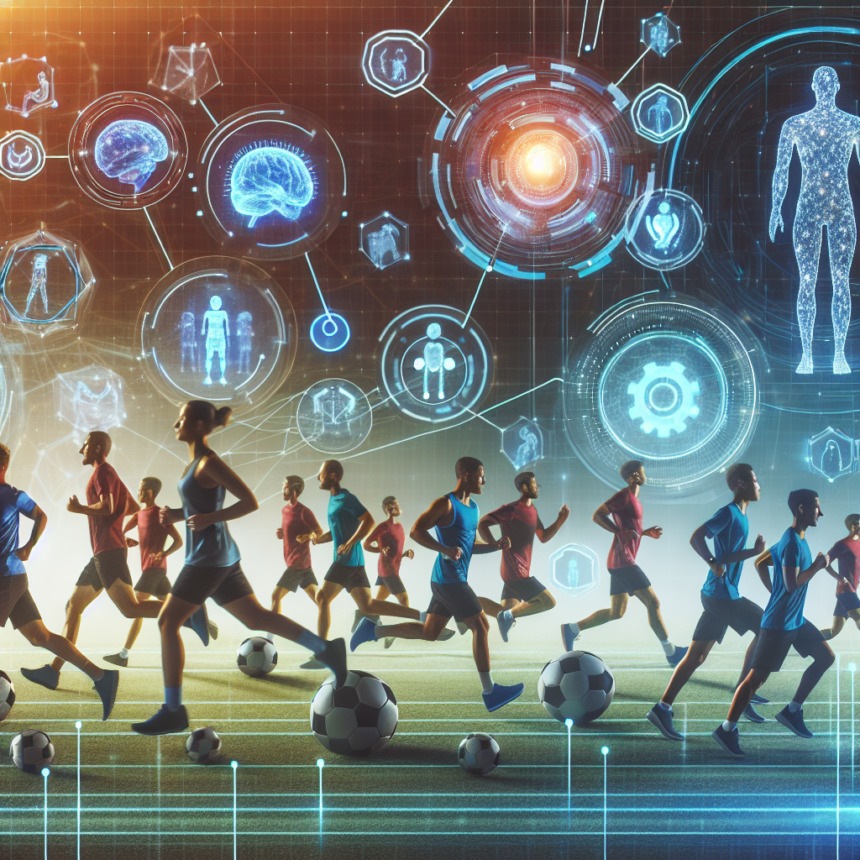Revolutionizing Performance: The Role of AI in Athlete Training
In the ever-evolving realm of sports, technology has played an influential role in enhancing performance and optimizing training regimens. Among the groundbreaking advancements, Artificial Intelligence (AI) has emerged as a game-changer in athlete training. By harnessing the power of AI, coaches and athletes are able to analyze performance with unprecedented accuracy, tailor training programs to individual needs, and predict injury risks. This transformative technology is revolutionizing the way athletes prepare for competition, ensuring that they reach their peak performance while minimizing the chance of injury.
The Power of Data Analytics
Athlete training has traditionally relied on observation and experience, but the integration of AI is ushering in an era of data-driven decision-making. AI-powered systems can analyze vast datasets, from physiological responses to environmental factors, in real time. By employing machine learning algorithms, these systems can identify patterns and trends that would be imperceptible to human coaches.
For example, AI can analyze an athlete’s heart rate, pace, and stamina across various training sessions, providing insights that allow for more personalized training plans. This data-driven approach helps athletes identify their strengths and weaknesses, as well as track progress over time. Coaches can then leverage this information to modify training regimens, leading to more efficient and effective preparation.
Personalized Training
No two athletes are the same; therefore, a one-size-fits-all training approach is becoming increasingly outdated. AI facilitates personalized training programs by taking into account an athlete’s unique physiology, skill level, and training history. With AI algorithms, coaches can create tailored training sessions designed to optimize specific outcomes, whether that’s building strength, improving endurance, or enhancing speed.
For instance, machine learning models can analyze past performance to predict how an athlete might respond to different training stimuli. This enables coaches to fine-tune workouts, ensuring that each athlete receives the right amount of stress and recovery, ultimately enhancing their performance.
Injury Prevention and Recovery
Injuries can sideline even the most talented athletes, but AI is making significant strides in injury prevention and recovery. AI models can assess various factors, including an athlete’s biomechanics, muscle imbalances, and overall workload, to predict potential injury risks. By recognizing these red flags beforehand, coaches can adjust training loads or suggest alternative exercises to minimize injury risk.
Moreover, for athletes in recovery, AI can help create rehabilitation programs tailored to their specific injuries and recovery timelines. Analytical tools can track an athlete’s progress, adjusting the recovery plan in real-time to ensure optimal healing and return to peak performance.
Enhancing Game Strategy
AI is not limited to training alone; it is also augmenting game strategy and performance analysis during competitive events. Advanced algorithms can dissect game footage, offering insights into opponents’ strategies and player tendencies. Coaches can use this data to develop more effective game plans, ensuring that their teams are prepared to exploit their opponents’ weaknesses.
Additionally, real-time analytics during competitions can help coaches make informed decisions, whether it’s in the heat of battle on the playing field or court. The ability to analyze a significant number of variables instantaneously provides teams a competitive edge that is crucial in high-stakes environments.
Conclusion
The role of AI in athlete training is nothing short of revolutionary. By utilizing data analytics to personalize training, prevent injuries, and enhance strategic performance, AI is transforming what it means to be an athlete. As technology continues to advance, the integration of AI into athletic training will only deepen, leading to more personalized and efficient approaches that push performance boundaries.
FAQs
Q1: How does AI improve the analysis of athlete performance?
A1: AI analyzes large datasets from training sessions, capturing metrics like heart rate, pace, and fatigue levels. It identifies patterns that help in tailoring training programs to individual athletes’ needs.
Q2: Can AI predict injuries before they occur?
A2: Yes, AI can assess various factors, including biomechanics and workload, to forecast potential injury risks, allowing for preemptive adjustments in training to minimize injuries.
Q3: How personalized can AI-driven training programs get?
A3: AI can customize training programs based on an athlete’s unique physiology, skill levels, and previous training data, creating highly tailored regimens that optimize performance.
Q4: Is AI utilized during competitions, or just in training?
A4: AI is used in both training and competitions. During competitions, AI helps analyze real-time performance and opponent strategies, enabling informed coaching decisions.
Q5: Are there any drawbacks to using AI in athlete training?
A5: While AI offers numerous benefits, potential drawbacks may include over-reliance on technology and the need for data security. Coaches and athletes should balance AI recommendations with personal experience and intuition.








